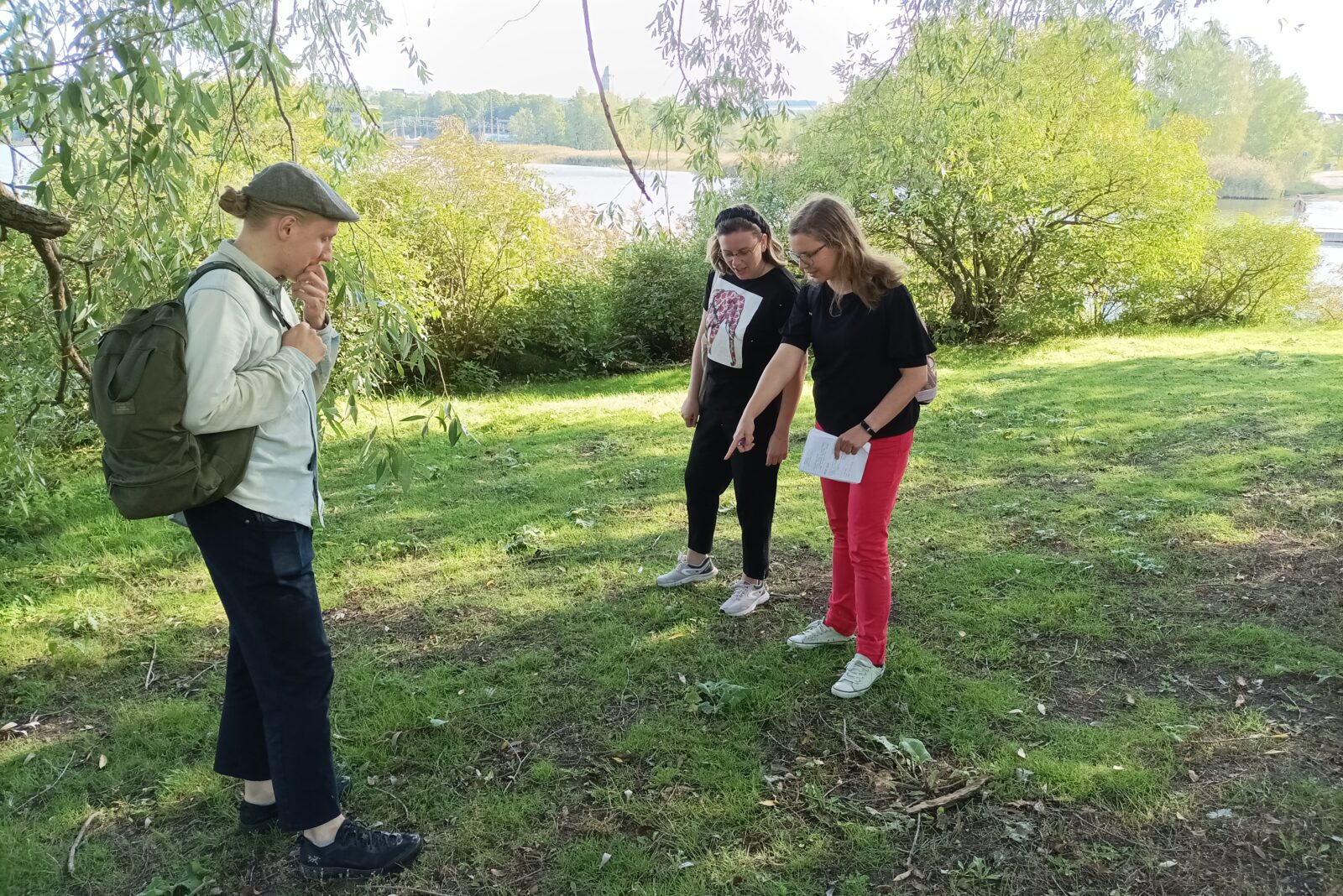On 26 August, the CO-CARBON research project organized a festival to share the new knowledge generated by our research team with the general public. Project researchers Liisa Kulmala (WP2 leader), Eugenia Castellazzi (WP3), Justine Trémeau (WP1), and Esko Karvinen (WP1) organized a science walk “Where does the carbon hide?”. A total of around 15-20 participants joined the tours guided both in English and in Finnish.
In more or less dry weather conditions, Liisa, Eugenia, and Justine guided the participants around the south shore of Töölönlahti. At the first stop, the participants learned about scientific terms, such as carbon cycle and carbon sequestration and drivers and barriers for those. With some help from the guides, they were able to identify where the carbon is hidden around them: in the air, in trees, grassland vegetation… but mainly in soil!
We then moved on to a meadow-like grassland to explore how this ecosystem contributes to mitigating climate and biodiversity crises. The grassland provides suitable habitats for diverse species and is more drought tolerant than non-irrigated lawns. Also, the role of green spaces for human activities was discussed, and how meadows and lawns offer a range of recreational and aesthetic benefits.
The last stop gave us an overview of the mosaic-like structure of urban environments. From a horizontal perspective, we could see a wide lawn surrounded by trees, trees closer to the water, hygrophile (moisture-favouring) vegetation, the bay water. From a vertical perspective, there were also dead trees, small bushes, and tall tree species that are not common in Finnish nature. Participants listed a variety of ecosystem services provided by urban nature at this location: carbon sequestration, air quality regulation, water regulation, pollination, aesthetic values, recreation, and mental and physical wellbeing.

Figure 1. Large dead wood lying in Töölönlahti is long-term carbon storage. It improves biodiversity by creating a habitat for many different species.
By the end of the walk, the participants had discovered different aspects related to urban nature: carbon sequestration, biodiversity, and well-being! In addition, participants received CO-CARBON stickers and a postcard, plus a wonderful set of cards (Kotipihan hiilikortisto) made by WP5/Outi Tahvonen (HAMK), which they can use to continue to study their surroundings from the carbon and biodiversity perspectives.
Sharing scientific knowledge was also a rewarding experience for us researchers. Interaction with people gave us new insights and perspectives, such as on the poor success of many plantations near Oodi and practical troubles in meadow management.

Figure 2. Large dead wood lying in Töölönlahti is long-term carbon storage. It improves biodiversity by creating a habitat for many different species.
(Text and photos by Justine Trémeau, Eugenia Castellazzi, Esko Karvinen & Liisa Kulmala)
Starting photo: Researchers Esko Karvinen, Eugenia Castellazzi and Liisa Kulmala discussing about urban soil carbon.
